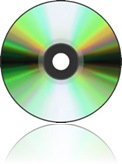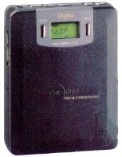What is the best way to rip CD’s? – Part 1
The topic of encoding music for use in your digital devices can be quite intimidating. Rightly so since there are many audio file formats and so many variants. Here are a few of the better known formats; MP3, FLAC, OGG, APE, AAC, WAV, ALAC, lossless, lossy, compressed, and uncompressed. Throw in sample rate, sample size, bit rates (average bit rate, constant bit rate, variable bit rate) and consider that that not all devices and software will recognize all formats, you can quickly find yourself overwhelmed with the choices.
Hopefully this series of articles will begin to untangle, demystify and clarify the important decisions you’ll be making as you begin to encode your CD’s for use in your digital life.
Let’s take a look at the big picture.
 The digital bits that comprise the music on an Audio CD are by nature in an uncompressed format. They are not being compromised in any way during the process of being played other than the digital to analog conversion (DAC) that takes place in your audio equipment so that your speakers are able to produce the sound that you hear. But the downside to this uncompressed music is that it takes up a lot of space. If you are just playing a CD on a CD player, it is irrelevant how much space is used. The issue of space and sound quality only rears it’s ugly head when you begin to transfer what is on the CD to a digital file that will reside on a hard disk, USB drive, iPod or any other digital music player.
The digital bits that comprise the music on an Audio CD are by nature in an uncompressed format. They are not being compromised in any way during the process of being played other than the digital to analog conversion (DAC) that takes place in your audio equipment so that your speakers are able to produce the sound that you hear. But the downside to this uncompressed music is that it takes up a lot of space. If you are just playing a CD on a CD player, it is irrelevant how much space is used. The issue of space and sound quality only rears it’s ugly head when you begin to transfer what is on the CD to a digital file that will reside on a hard disk, USB drive, iPod or any other digital music player.

The MPMan F10, one of the first MP3 players
When digital music players first came on the scene around 1998, the amount of memory for the music they would be playing was tiny by today’s standards.One of the very first players, the MPMan F10 manufactured by Korea’s Saehan Information Systems, cost about $250 and only had 32MB of flash memory which would not have been able to hold even a single file of uncompressed music in WAV or AIFF format (more on formats later.) Compare that to digital music players today that could have up to 24GB or more of flash memory storage. Obviously there was going to have to be a way to reduce file sizes of the music in order to be able to have a larger amount of music on your digital music player of yesteryear.
The MP3 format was developed as a means to significantly reduce the size of music files. At 128kbps, a MP3 is roughly 10 times smaller than the original uncompressed file. In other words a 40MB uncompressed music file could be reduced to just 4 MB in size once it has been converted to a 128kbps MP3.  However there was a downside to this reduction in file size, namely, loss of fidelity. The concept behind the MP3 format is that it removes some of the music information in order to achieve the reduction in file size. Algorithms were developed that would analyze the music then make educated guesses about what data to discard in order to make the file size smaller. The idea was to throw out music information that would not be “noticed” by the listener. It’s really just a sleight-of-hand trick that achieves the smaller file sizes while providing a “good enough for most” sound quality. The problem is that many audiophiles did notice the reduction in sound quality and will have nothing to do with MP3 music at all. An excellent article on MP3 sound quality can be found at http://www.stereophile.com/features/308mp3cd.
However there was a downside to this reduction in file size, namely, loss of fidelity. The concept behind the MP3 format is that it removes some of the music information in order to achieve the reduction in file size. Algorithms were developed that would analyze the music then make educated guesses about what data to discard in order to make the file size smaller. The idea was to throw out music information that would not be “noticed” by the listener. It’s really just a sleight-of-hand trick that achieves the smaller file sizes while providing a “good enough for most” sound quality. The problem is that many audiophiles did notice the reduction in sound quality and will have nothing to do with MP3 music at all. An excellent article on MP3 sound quality can be found at http://www.stereophile.com/features/308mp3cd.
Essentially there are three types of audio file formats; uncompressed, lossless and lossy. WAV and AIFF are two examples of an uncompressed format. FLAC and ALAC are examples of a compressed but lossless audio file format while MP3 and AAC are examples of compressed, lossy audio file formats.
The next in this series of articles will discuss in more detail the differences, pros and cons of the various audio file formats.

